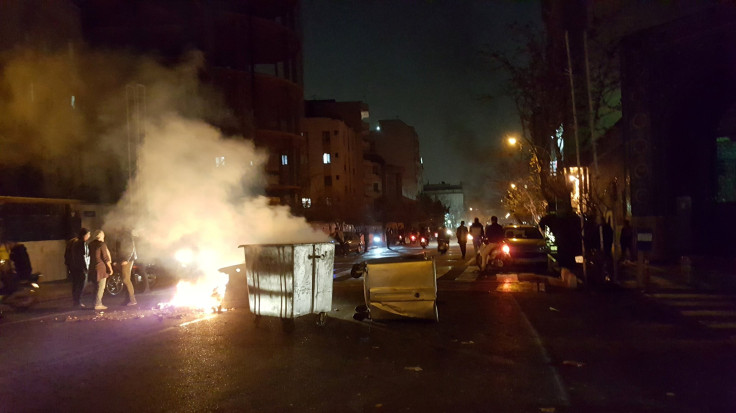Protests In Iran On New Year's Eve: What Are The Protesters' Demands?

What started as small rallies to protest economic reform in Iran’s second-largest city Masshad on Dec. 28, spread to larger cities over the past three days and quickly took on a political color. Protestors took to the streets in large numbers in cities such as Tehran, Qom, Isfahan, and Zahedan demanding President Hassan Rouhani to step down with slogans such as “Death to Rouhani,” and “Death to the dictator.”
The foremost grievance of the people is the economic condition in the country. Iran’s economy saw an improvement after the 2015 nuclear deal, which was in exchange for the end of some international sanctions, according to U.S. News and World Report. Keeping with the deal, Iran limited its enrichment of uranium. The end of sanctions helped Iran sell oil on the global market. The country has also signed deals to purchase billions of dollars worth Western aircraft, the report added.
Unfortunately, these improvements have not trickled down to the average Iranian. Unemployment is high, inflation crept up to 10 percent and wages are down, the report further stated. A recent rise in egg and poultry prices, by up to 40 percent, which the government blamed on avian flu fears, have also not gone done well with the people. Experts believe banking crisis and delay in paying retirees’ pensions and workers pay also lead to the riots.
“We should not label all of the protesters anti-revolutionary,” Ahmad Khatami, a hardline cleric and member of the influential Council of Experts, which has the constitutional role of selecting the supreme leader, said, reported Radio Farda, the Iranian branch of the U.S. government-funded Radio Free Europe/Radio Liberty external broadcast service.
Responding to the protests, President Rouhani’s deputy Eshagh Jahangiri said even though the prices have increased in recent days, all economic indicators show the country’s economy has improved, Radio Farda reported.
“Those who initiated the actions against the government should know that they will be the losers”, Jahangiri added without elaborating further.
With the protests showing no sign of slowing down, Iranian authorities threatened a crackdown against the protesters. Rouhani, responding for the first time since the turmoil began, said on national television Sunday that people have the right to criticize but warned antisocial behavior and destroying of public properties would not be tolerated, the Guardian reported.
Rouhani, in his speech also condemned President Donald Trump, who tweeted his support for the protests.
“This gentleman who today sympathizes with our people has forgotten that a few months ago he called us a terrorist nation. The one who has opposed the Iranian nation from his head to his toe has no right to express sympathy for people of Iran,” Rouhani said.
As part of the initial crackdown, police arrested at least 200 people during demonstrations in Tehran. Two protesters were killed in western Iran on Saturday. Iran has also blocked social media apps such as Instagram and Telegram, which they alleged were used to incite unrest. Authorities added the filtering was temporary, BBC reported.
This is not the first time Iran has seen such widespread protests. But, these protests are different from the most far-reaching predecessor – the 2009 turmoil, which was to object the fraudulent elections. The primary difference is how the demands vary. If the 2009 riots were incited due to the allegations of fraud during the elections, the goals of the 2017 protests keep shifting. There is also a definite lack of leadership.
© Copyright IBTimes 2024. All rights reserved.





















